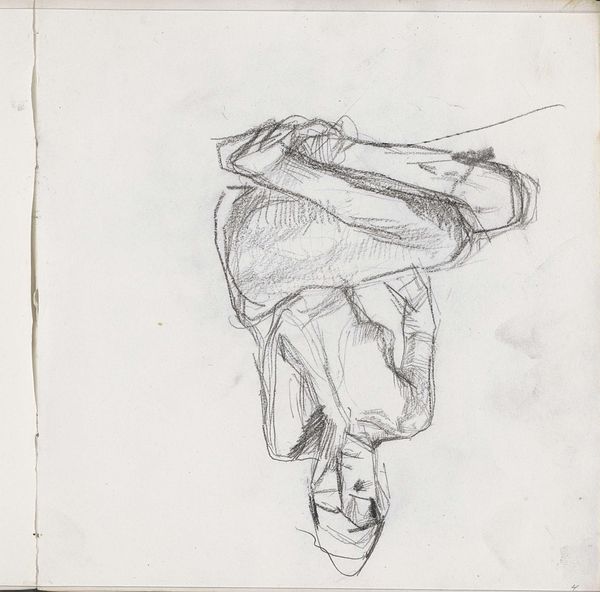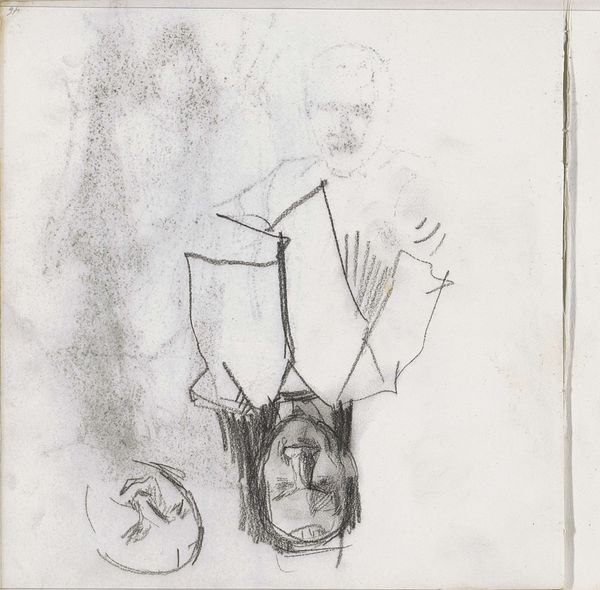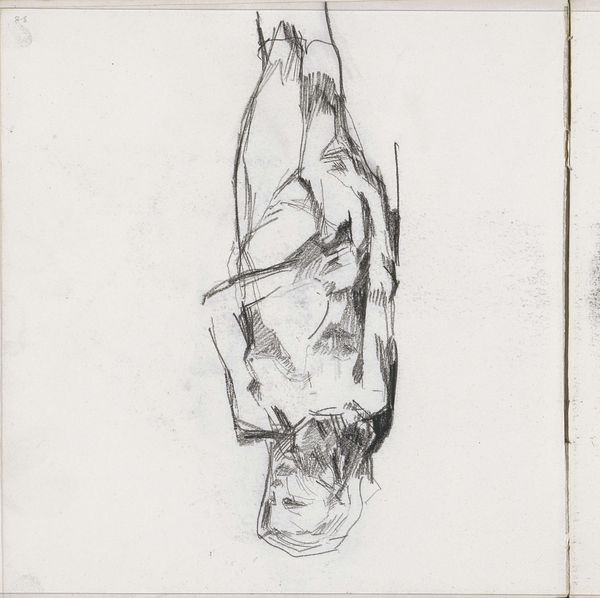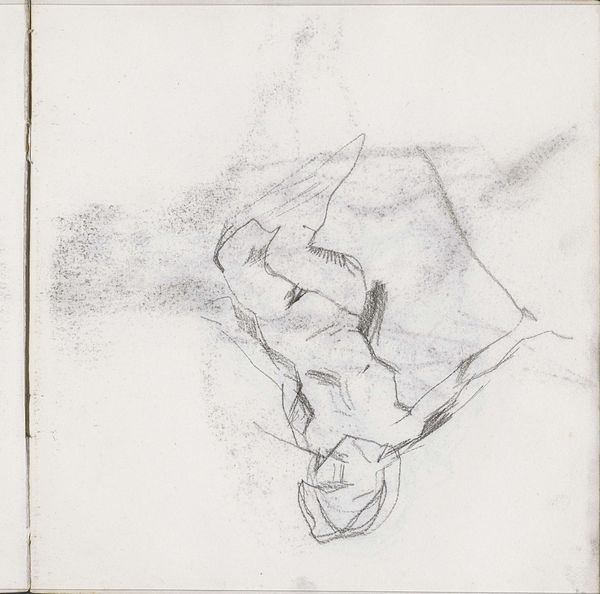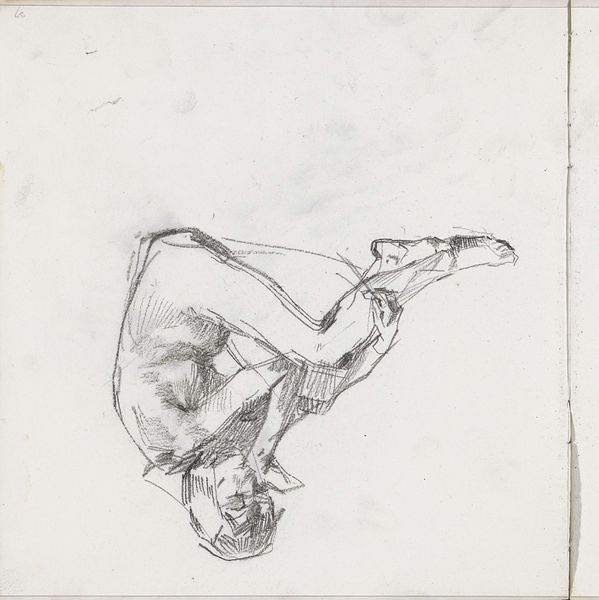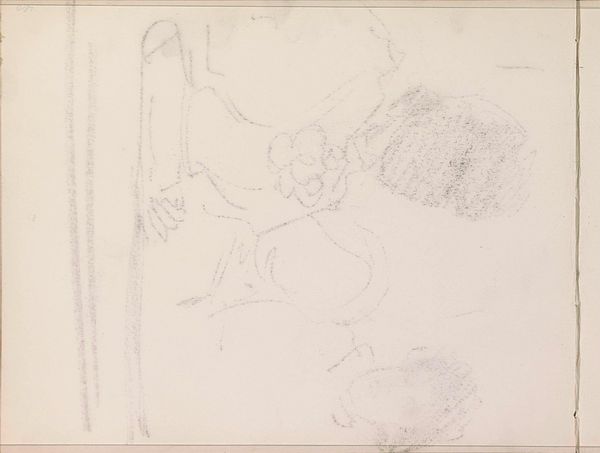
#
amateur sketch
#
light pencil work
#
pencil sketch
#
incomplete sketchy
#
personal sketchbook
#
idea generation sketch
#
ink drawing experimentation
#
pen-ink sketch
#
sketchbook drawing
#
sketchbook art
Copyright: Rijks Museum: Open Domain
Curator: Isaac Israels created this intriguing pencil sketch, “Man met geheven rechterarm,” sometime between 1875 and 1934. It's currently held at the Rijksmuseum. My first impression is its incredible lightness— almost ephemeral. Editor: Yes, that’s immediately striking. It feels more like a fleeting thought captured on paper than a formal portrait. You can almost see the graphite dust it's so minimal. It gives a sense of the artist at work, experimenting with the medium. Curator: And who that man might be... The raised right arm! What statement might the sitter be trying to project through this posture? Was this posture referencing the working class during this era? Was it trying to project strength or even making some political statement in light of historical narratives and their construction in the Netherlands at this time? Editor: Possibly, or perhaps it's a mundane gesture, elevated by the act of representation. I'm drawn to the labor implicit in even this brief sketch. The choice of pencil, the paper, the act of repeatedly applying graphite to the surface – these elements highlight the artist's process of translating perception into tangible form. And to question what work he was possibly involved with or being prevented from by his sitter in this pose. Curator: Exactly, but to disregard the impact of societal power structures would ignore how they were influencing perceptions during the turn of the 20th century, for both the artist, subject and contemporary viewers like us today. This poses further inquiries. How might this sketch address themes of gender, class, or race as constructed through visual language? Is this an example of social commentary through informal representation, thus adding to or confronting artistic conventions in portraying masculinity at this moment in Dutch art history? Editor: I'd argue we can't disregard the actual making; even this sketchy aesthetic signifies particular choices relating to production, a conscious turning away from academic precision. You notice how little the image has rendered beyond line and shape in light pencil work, making one curious how this was originally viewed from an artistic perspective as compared to how the general Dutch population felt at the time it was produced, and now. It provokes examination around art’s evolving function as a tangible document or object throughout varying social eras.. Curator: Perhaps in appreciating the interplay of material and social context we better interpret both Isaac Israels and his subject here within these artistic realms. The gesture captured, fleeting or potent, might offer deeper resonances about representation itself within history's evolving dialogues concerning society’s dynamics during 1875 and 1934 and even up to our contemporary context. Editor: Agreed, situating its creation into its societal period brings crucial awareness and invites reflections of art historical conventions both passed, ongoing, and possible innovations in art production across various demographics.
Comments
No comments
Be the first to comment and join the conversation on the ultimate creative platform.


